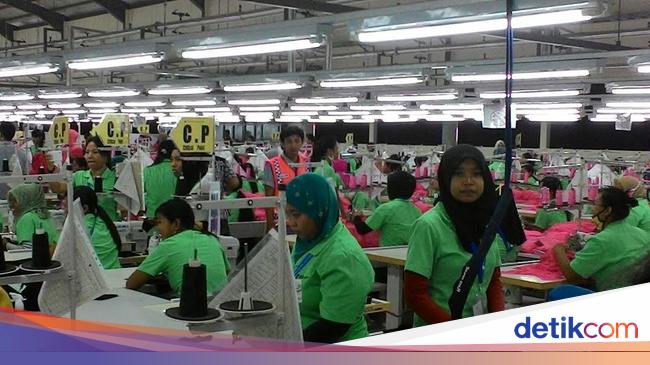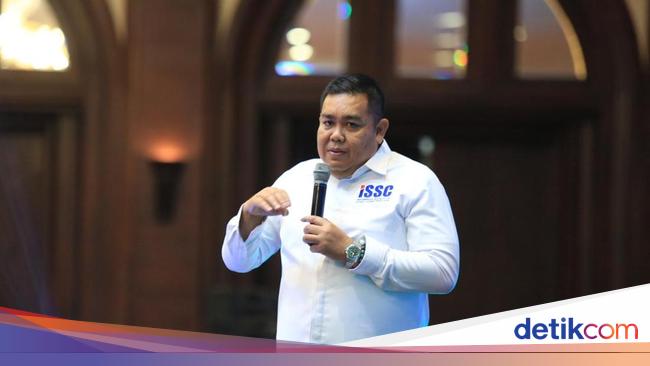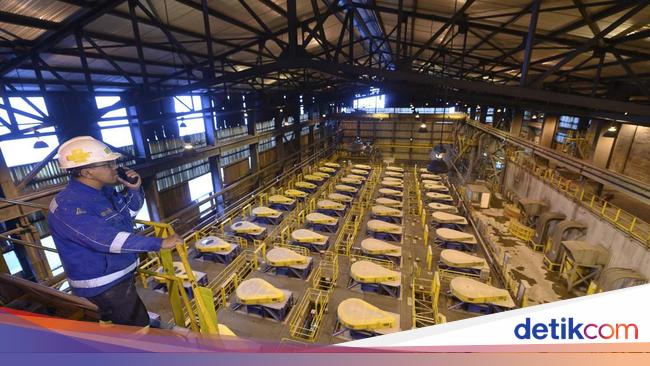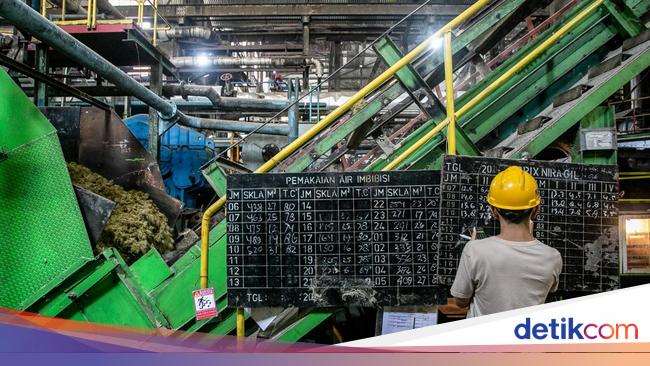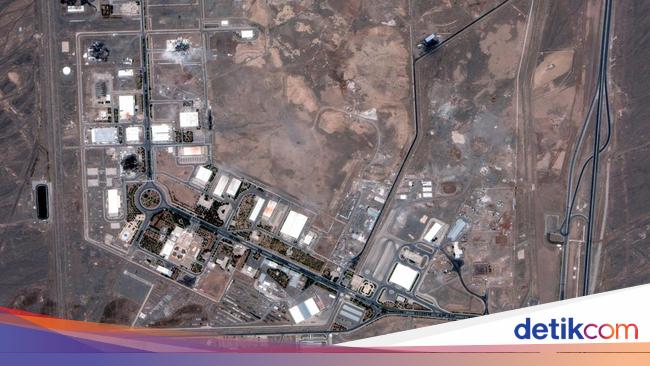Lizzy Becherano
Tim Vickery
Jun 30, 2025, 11:33 AM ET
As Lionel Messi enters the twilight of his legendary career, one defining question looms: Can he still lead Argentina to glory yet again at the 2026 FIFA World Cup?
While the 38-year-old continues to dazzle in MLS with Inter Miami, the competition he faces week in and week out doesn't always match the intensity or technical quality of the international stage. That's why the FIFA Club World Cup -- where Miami faced elite opponents from Europe and South America -- offered a glimpse into how Messi performs right now against elite defenders, and what it means for his role with his national team next summer.
ESPN's Lizzy Becherano and Tim Vickery explore how Messi's role has evolved, and what Miami and Argentina are doing to preserve his impact ahead of next year's tournament.
Messi's evolution at club level
Months after making his debut for Barcelona on Oct. 16, 2004, Messi scored his first senior goal off a Ronaldinho assist, becoming the club's youngest-ever scorer at the time. Since then, the Argentine forward has gone on to break most major records, set new standards, and redefine the game of soccer.
Messi first stunned the world in 2007 in a game against Espanyol when he gained possession of the ball in his own half before dancing and dribbling his way through multiple defenders to reach the final third and score. He defied expectations as an explosive, left-footed right winger who would cut through the middle to create what seemed like impossible chances for others.
Former Barcelona manager Pep Guardiola then redefined the meaning and role of a traditional striker, turning Messi into a "false 9" and tapping into his potential, which would see him overcome virtually any opponent. Messi's physical capacities, combined with his distinctive vision of the game, would quickly see the player become one of the greatest in the history of the sport.
His abilities with Barcelona didn't originally translate to immediate success for the Argentina national team, as coaches struggled to utilize Messi's talents. But everything changed under manager Lionel Scaloni. La Albiceleste no longer depended on the captain to do it all, but instead created a support system for Messi to be able to shine in the final third.
Now, at 38, his approach to playing has matured, but the ability to affect any game remains.
At Inter Miami, the club continues to find a way to capitalize on Messi's talents without subjecting his body to any physical overload. The MLS calendar runs from February to December, with 34 regular-season games and a monthlong-plus playoff campaign if a team qualifies for the final. This year, Miami and Messi also participated in the Concacaf Champions Cup, the FIFA Club World Cup, and will participate in the upcoming Leagues Cup, which begins in late July.
And while most of Messi's club matches now come in MLS, where he often faces less pressure and intensity, the Club World Cup presented a sharper lens. Facing teams like the defending UEFA Champions League winners Paris Saint-Germain -- and previously FC Porto and Palmeiras -- allowed Messi to measure himself against defenders more akin to what he'll see in a World Cup knockout stage.
Miami head coach Javier Mascherano keeps a close eye on Messi's minutes and rests him at times in games with lower stakes in the MLS regular season. Individually, Messi adapted his style to maximize his influence on the field and preserve enough energy to shine when needed.
His skill set hasn't changed, but how Messi uses his greatest assets has evolved. The player now depends more on his precise read of the game to provide a perfectly timed assist and his ability to find a pocket of space to score. Though Messi's facility to weave through a backline and into the final third might be seen at a slower pace, it continues to be just as effective.
Statistically, Messi's transformation is easy to trace -- as is the latitude afforded him by subpar MLS defenses.
At the Club World Cup, he averaged 5.5 meters traveled per carry, a figure that's down from 6.1 meters per carry in MLS play. That 5.5 figure is largely in line with what Messi produced in his final seasons in Europe (5.2 with PSG in 2022-23, 5.7 with Barcelona in 2020-21), while the 6.1 mark recalls Messi's impact at the height of his powers, when he averaged 6.2 meters per carry in 2011-12.
His take-on attempts per 90 follow a similar pattern. His average of 4.5 in this Club World Cup is down significantly compared to 2011-12, when he averaged 9.1 at his explosive peak, but his 7.99 per 90 in MLS play illustrates the opportunities with the ball at his feet presented to him by league opposition. When facing sterner competition, we can see a clear shift away from dribbling and more toward efficient movement and playmaking.
At the same time, his attacking-third passes per 90 have declined from 35.6 in 2011-12 with Barcelona to just 13.0 in the Club World Cup, not due to decreased involvement, but rather a more selective and precise approach. That number rises to 24.3 in his domestic play in 2025.
Messi may no longer dominate with constant motion, but his ability to pick the right moment and make the right decision remains intact, still being decisive against high-level opponents.
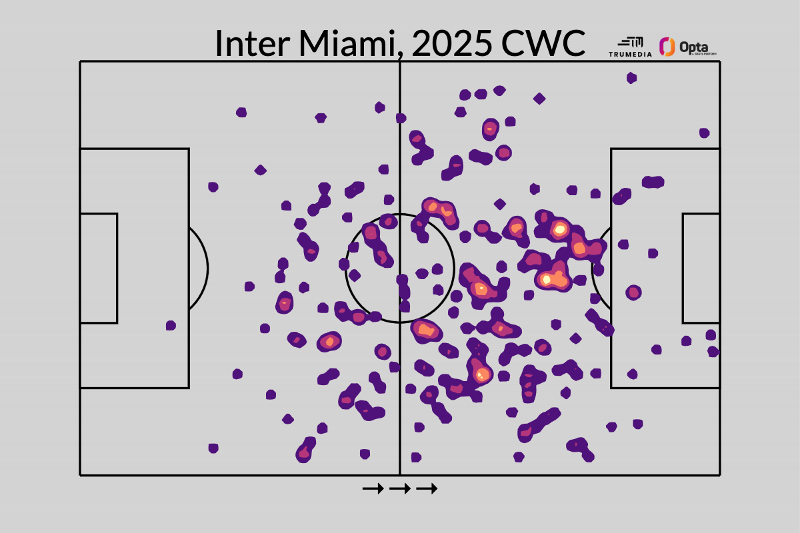
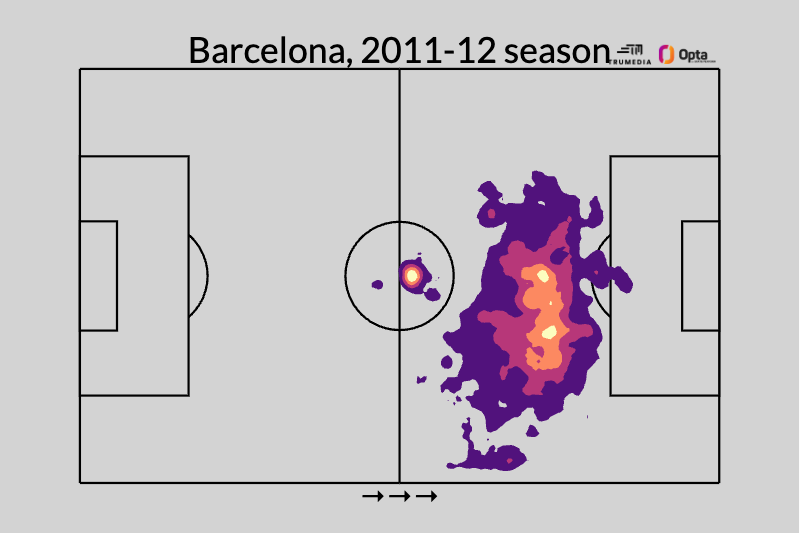
Source: TruMedia
In modifying his game, Messi can feel a sense of pain or muscular tension and continue to be clinical with his left foot. When facing Porto in the second group-stage game in the Club World Cup, Mascherano confirmed the player felt discomfort throughout the match but insisted on remaining on the pitch to play. In doing so, Messi was able to score the winning goal off a set piece by rocketing the ball into the upper right corner of the net, as fans have seen numerous times before.
"We can say he's the best player to have ever played this game, but his desire to win is surprising, because [against Porto], even in the final minutes, tired and injured, he continued to help the team get the result," Mascherano said. "We have to hold onto that and know that having him gives us an advantage, and we have to catch his spirit."
Even injured, Messi can count on the precision of his left foot.
He continued to be effective in the round of 16 against PSG, showcasing moments of his evolved game in the second half before being eliminated from the competition with a 4-0 defeat. Messi dribbled past PSG players in an attempt to set up Tadeo Allende and Luis Suárez for the goal, but his teammates couldn't capitalize on the support from the Argentine.
His ability to weave through players to reach the final third can still stun even the reigning champions of Europe, but he needed help. -- Becherano
Messi's evolution for Argentina
So, what more chapters are left in this extraordinary story?
Is it even possible that Sunday's 4-0 loss to PSG in the round of 16 of the Club World Cup was the last time we see Messi in a major tournament? There is still no official confirmation that he will play next year's World Cup.
The line has always been "wait and see," with the player needing to confirm to himself that he will be able to do himself justice in 2026. There are few better measuring rods than a knockout game against the reigning European champion.
It is unreasonable to expect a 38-year-old to be able to perform at his previous peak. In the race between time and the athlete, there is only ever one winner.
Two-and-a-half years have passed since the World Cup in Qatar, and we are unlikely to see Messi consistently reach that level. But the Club World Cup has shown that he can still influence the course of events, dropping deep to control the rhythm of the game, closer to goal with a sudden surge of acceleration and of course, those free kicks when he almost seems to pick up the ball and place it in the top corner of the goal.
The chances are that Argentina and Scaloni can still find a way to make sure that Messi plays a part in the next World Cup.
The relationship between Argentina's coach and the captain has been nothing short of remarkable. Scaloni took the job on a caretaker basis after the 2018 World Cup in Russia. He was seen as a inexpensive stop-gap, but he came in, with next to no experience behind him, full of ambition. He had been highly influenced by then-world champion France and announced his intention to bring in a new style, based on fast transitions. His side would win the ball and be in a position to shoot within three or four seconds.
It hardly seemed an idea adequate for a Messi side, and it began disastrously in the 2019 Copa América. It could have all gone wrong, but Scaloni had the good fortune to count on a new Messi.
In conflict at the time with Barcelona, Messi appeared to make the Argentina national team his top priority. What did he need to change? There had long been a feeling that his aloof manner had an intimidating effect on the rest of the squad. But in 2019, there was a big difference.
Reporters who cover the team noted that he had transformed into a vocal leader and encouraging presence. Argentina lost to Brazil in the semifinals, but it emerged from the Copa with the sketch of a team, in both a tactical and a psychological sense.
The team had become possession-based, wearing down the opposition and giving the ball to Messi where he could do the most damage, close to goal. And they lined up almost like Messi and his fan club. The others had a reverence for him and should do whatever it took to give him a platform to take the team to victory.
At the final whistle of the 2021 Copa América, when Messi had finally won a senior title for his country, the entire squad ran to him to celebrate, and, of course, the team had an even bigger prize to celebrate at the end of the following year.
The Qatar World Cup was a masterclass of Scaloni's tinkering, altering the system depending on the opposition, and making personnel changes. The changes were designed to help the main idea stay the same, to help Argentina get the best from Messi. The team soon discovered that the tournament would be hard work, and that it would not have the bulk of possession it had imagined.
So Lautaro Martínez had to give way at center forward for Julián Álvarez, a striker with the soul of a midfielder who could do all of Messi's running for him.
But what now? Is it still worthwhile making so many sacrifices for the benefit of one player?
2:03
Burley: If not for Messi, Inter Miami wouldn't be at Club World Cup
Craig Burley responds to Jordi Alba's post-match interview after Inter Miami were brushed aside 4-0 by PSG.
The worst moment that Argentina has endured since Qatar came at a moment of historic triumph. In November 2023, Argentina beat Brazil 1-0 at the Maracanã Stadium in Rio de Janeiro, the first time Brazil had ever lost a World Cup qualifier at home. In truth, the result was better than the performance. And there was an extra reason for Scaloni to worry. True, Messi was not 100% fit, but he made little impression -- something that would have been unthinkable a couple of years earlier -- and he was substituted with 15 minutes to go.
In the postmatch news conference, Scaloni flirted with the idea of resigning. The explanation was simple: Scaloni had built his team around Messi and was beginning to wonder if that formula still worked.
But time has a way of turning the unthinkable into the possible. And just as the Copa América tournaments of 2019 and 2021 were important in cementing a bond between Messi and the team, so too the 2024 tournament hinted at a future without him.
In the second half of the final against Colombia, he pulled up with an injury and was substituted. Arguably, Argentina improved in his absence and went on to win the match.
Scaloni has had the opportunity to look at ways of setting up his side without Messi. The first option was to play Álvarez and Martínez together, with Álvarez dropping into the Messi slot, which was the blueprint when Argentina beat Chile 3-0 last September. More recently, Scaloni has gone with Álvarez at center forward, combining with Thiago Almada cutting in from the left as a playmaker.
This was how back in March, Argentina won away against Uruguay and then produced a magnificent display to brush Brazil aside 4-1. For the group, without taking away any of its reverence for Messi, it was a massive psychological boost to win so well without him.
And Messi, too, seems happy with this state of affairs. Back for the June FIFA dates, he came off the bench in the visit to Chile, and was taken off in the second half at home to Colombia, when just after he had been withdrawn, Almada scored the equalizing goal.
The dynamic has changed. It's no longer just a case of Messi and his fan club. His fans have grown up and are ready to take on more responsibility. And it's this very confidence in his own teammates -- the knowledge that it's no longer all up to him -- that makes it more likely that Messi will round off his World Cup career with another crack at glory next year. -- Vickery

 3 months ago
39
3 months ago
39
































